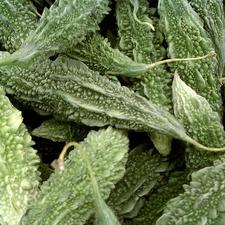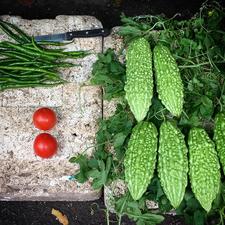Bitter melon


Foods Included
African cucumber, Ampalaya, Balsam pear, Balsam-apple, Balsambirne, Balsame, Bitter apple, Bitter cucumber, Bitter gourd, Bittergurke, Carilla fruit, Carilla gourd, Cerasee, Chinli-Chih, Cundeamor, Karavella, Kathilla, Karela, Kareli, Kerala, Kuguazi, K'u-Kua, Lai Margose, Melon Amargo, Melon amer, Momordica, Momordica charantia, Mormordica murcata, Pepino Montero, P'u-T'ao, Sorosi, Sushavi, Vegetable insulin, Wild cucumber, Bitter squash
Description
Bitter melon is a member of the squash family. It looks like a cucumber with bumpy skin. It is often eaten green or as it is just turning yellow. When green, it has a crunchy, watery texture. The flavor is bitter.
Buy It
Select firm melons without spots. Size ranges from 5 to 23 inches in length. Choose melons that are still green for a more bitter flavor; yellow or orange melon has a milder taste. They may also be purchased canned or dried.
Store It
Store melon loose in a paper or plastic bag in the refrigerator. They keep this way for 3 to 5 days. Slice right before use.
Cook It
Wash the melons and pat dry, then cut off short stalks at both ends. Scrape the outer peel with a paring knife to remove a thin layer. Split in half, dig the seeds out with a spoon, and slice it into half moons. Saute in a pan with some oil until lightly toasted. Add to salads, stews, and soups. Bitter melon can also be prepared by boiling, steaming, baking, pickling, or stuffing with minced meat, herbs, or rice.
Why It's Great
Fat free, saturated fat free, cholesterol free, and sodium free, and an excellent source of vitamin C.
Try It

“Funded by USDA SNAP, an equal opportunity provider and employer. Visit http://calfreshhealthyliving.org for healthy tips.”
